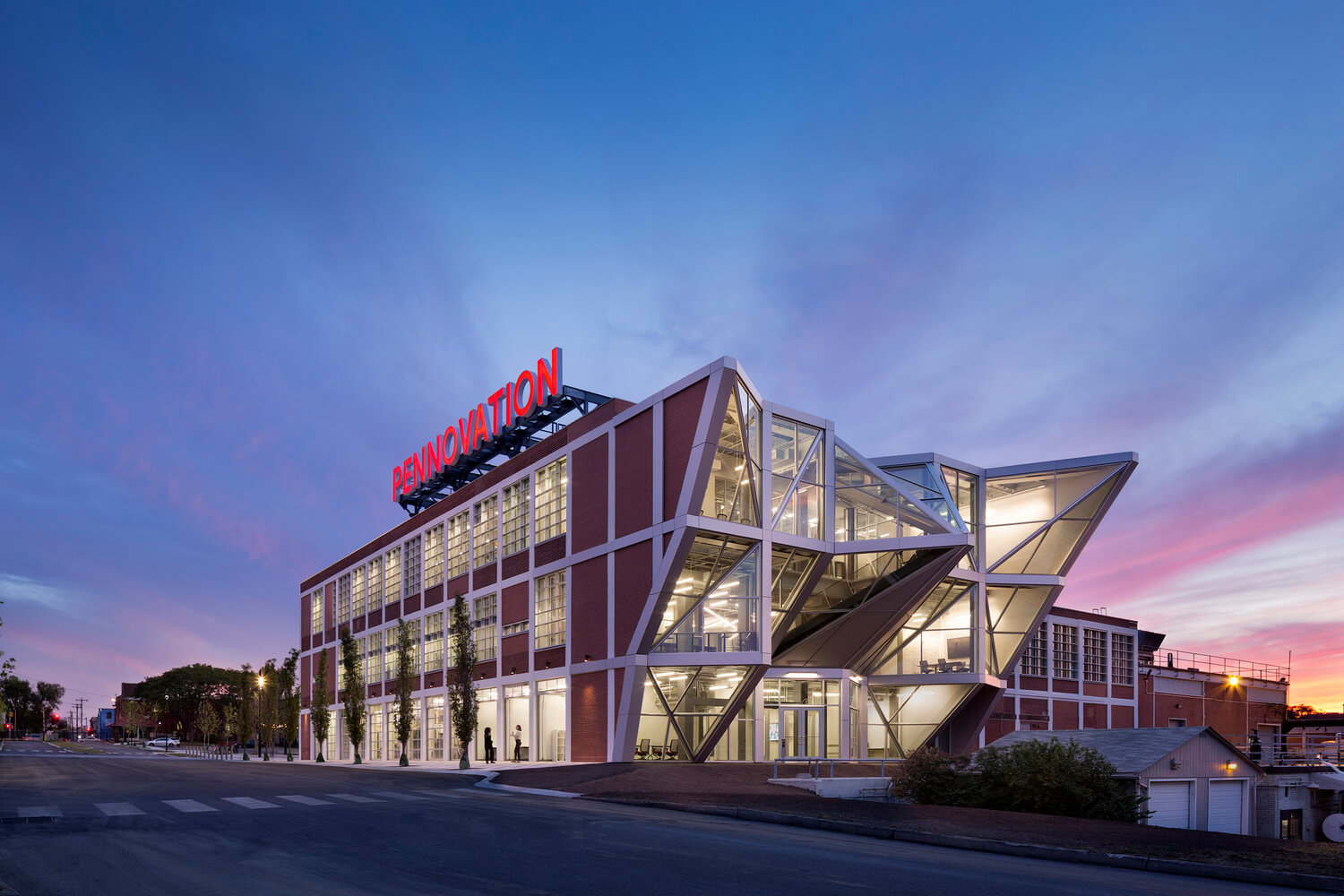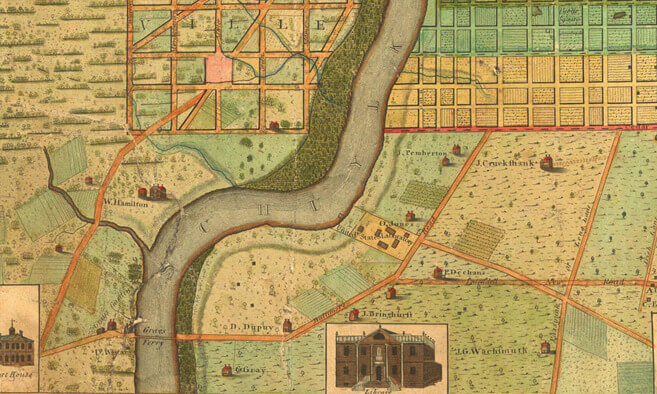The Pennovation Works is a 21st century hub for innovation and industry. Beginning with the creation of the Pennovation Center – a building redesigned and adapted from a 20th century paint factory – the Pennovation Works consists of facilities existing for the purpose of turning ideas into economic opportunities for the surrounding area and neighborhoods. Interestingly, when you take a look at the site’s colorful history, you see that it’s been an incubator for industry and innovation in the Philadelphia area for over 200 years.

Pennovation Works site was host to the Lower Ferry crossing of the Schuylkill River, which served as the southern entrance to Philadelphia throughout the 18th century.
Mid-1700s - Ferry operator George Gray began to develop the area surrounding the crossing, opening a tavern and designing a garden to attract patrons to the area, with waterfalls, grottoes, and greenhouses.
On the west bank of the Schuylkill River, Gray’s Garden became important to the local horticultural movement, which included celebrated gardens at the Woodlands and Bartram’s Gardens on the west side of the Schuylkill (opposite the Pennovation Works site), and seed manufacturers on the east bank of the river, just a few blocks from the site.
1778 - George Gray replaced the ferry crossing with a floating bridge that could be pushed aside to accommodate barges and ships navigating the river.

George Washington crossing at Gray’s Ferry, circa 1789. [photo credit: Library of Congress]

Gray’s Ferry site map, circa 1802. [photo credit: David Ramsey Online]
1838 - Sixty years later, the Philadelphia Wilmington and Baltimore Railroad replaced the heavily used Gray’s Ferry bridge with a permanent railroad bridge, the Newkirk viaduct.
With Baltimore and Philadelphia connected via railroad for the first time, industry began to thrive along the riverbank on what is now the Pennovation Works site. Factories sprung up in the location due to its access to the railroad as well as to the river. The site was also far enough from the city center that industries like chemical production and slaughterhouses could operate safely.
1865 to 1917 - Harrison Brothers operated an industrial chemicals and paint manufacturing company on the site, relocating their headquarters from their original hub in Kensington.
Harrison Brothers were leaders in the development of the chemical processes, and with contemporary innovations in the production of the tin cans, the company could make and distribute ready-mixed paint for the first time to average citizens. (Before these innovations, individual batches of paint needed to be mixed with new pigments each time, without the option to package or sell in large batches.)
By the late 19th century, the company was one of the top color manufacturers in the United States, employing over 400 workers at its 30-acre Grays Ferry site. Harrison Brothers expanded the site to include facilities for their employees like a restaurant and athletic field, as well as their own power plant and the first private telegraph line in the country.

Chemical Plant storage yard (near Pennovation site), circa 1902. [photo credit: Kislak University of Pennsylvania Libraries Special Collection]
1917 - The prominent E.I. DuPont & Nemours company purchased Harrison Brothers and Co., and the Grays Ferry site became home to DuPont’s new paint and finishes department.
Throughout the second half of the 20th century, the site - and in particular the current Pennovation Center structure - was a facility for both production and chemical research, and was responsible for many innovations in the field. Successful products developed on the site include Duco lacquer, a quick-drying automotive paint that was durable and revolutionized auto production by dramatically reducing the paint’s drying time.
While manufacturing ceased there in the 1980s, DuPont continued with research there until 2009. During the Harrison Brothers and DuPont Company eras, at least 11 patents are believed to originate from research conducted at this site.

Pennovation Works site aerial view, circa 1940. [photo credit: Library Company of Philadelphia]
2010 - the University of Pennsylvania purchased the site and worked closely with the Environmental Protection Agency and the Department of Environmental Protection to clean up and protect the site and its surrounding areas.
As the Schuylkill River has its revival with the Bartram’s Mile and extension of the Trail, this industrial riverfront is again establishing itself as a place of connection and progress, where ideas go to work.
